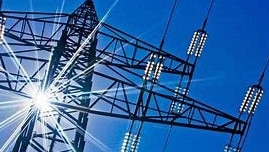Plan to let big energy users sell power to grid
Big energy users will be able to sell electricity into the wholesale power market under a plan that aims to head off blackouts.

Big energy users will be able to directly sell electricity into the wholesale power market for the first time under a proposal that aims to head off blackouts and cut the cost of meeting peak demand.
New market rules drafted by the national rule-maker plan to open up a “demand response” mechanism earlier than expected, by the 2021-22 summer, allowing large consumers of power to receive a financial benefit from cutting their own energy use when demand and wholesale prices are high, sending surplus energy back to the east coast’s electricity network.
The power market reform has been backed by large users including BlueScope Steel, CSR and the National Irrigators Council which can now sidestep the need to go through their electricity retailers to gain greater control over their power needs.
Others have opposed the change, including Sanjeev Gupta’s Simec Energy and the nation’s big three power retailers, raising concerns over the added complexity such a move would bring to a power grid undergoing immense structural change due to new technologies, renewable energy and the closure of coal-fired plants.
However, competition regulator Rod Sims has said this is more of a reflection of big retailers wanting to keep a new competitor out of the market rather than any fundamental desire to look at developing the demand response market. “Wholesale demand response is potentially a much more affordable way to ensure a secure and reliable energy supply than other sources of peaking generation such as gas or pumped hydro,” Australian Energy Market Commission chairman John Pierce said. “It can be used to address sudden drops in supply or spikes in demand.”
The demand response model will also not be rolled out at a consumer level under the draft decision, with the AEMC saying the difficulty of managing lower and less predictable energy loads made it a potentially high-cost exercise which could lead to increased household bills.
The AEMC had been urged last year to go even further than its current draft demand response proposal and extend the mechanism to allow households to participate by tapping pool pumps and household batteries which could provide electricity back to the system. Instead, a broader shift giving greater control to consumers will be formed as part of a planned “two-sided” marker reform.
The change will be debated at the next COAG energy council meeting on March 20, as part of a redesign of the national electricity market in 2025.
The demand response rule change was proposed by the Australia Institute, Total Environment Centre and Public Interest Advocacy Centre with the aim of opening up a new category of energy market player to compete against generators in the national electricity market.
“Reducing peak demand on the grid is more important than ever as summers get hotter and coal plants close. Introducing demand response in 2021 shows the Commission is serious about keeping down energy prices and preventing blackouts as energy supply gets tighter,” said Public Interest Advocacy Centre’s head of energy policy Craig Memery.

